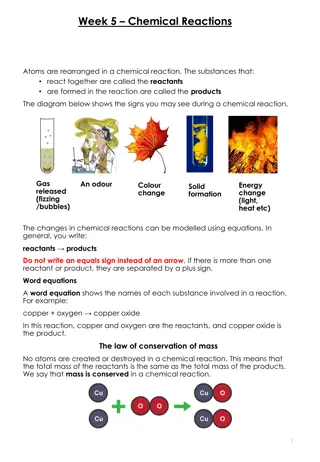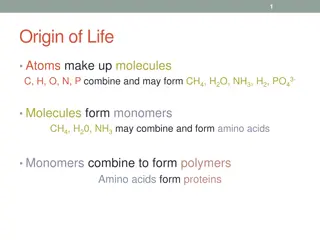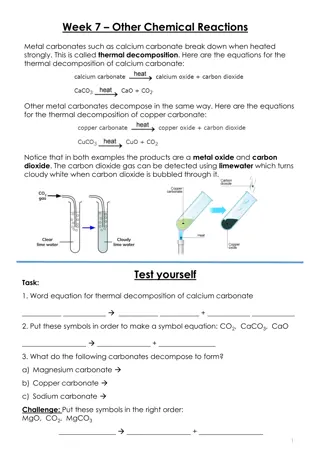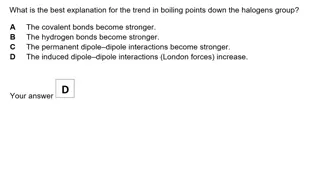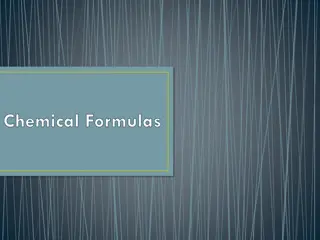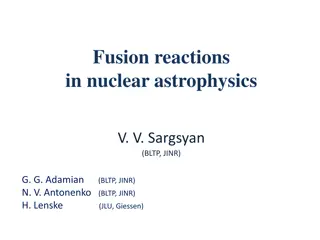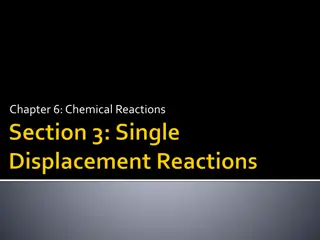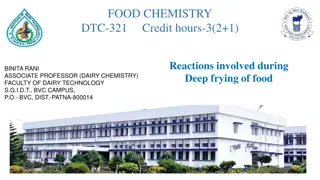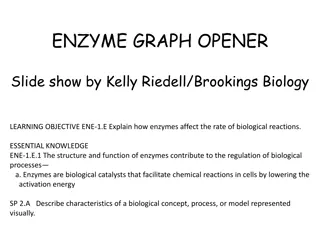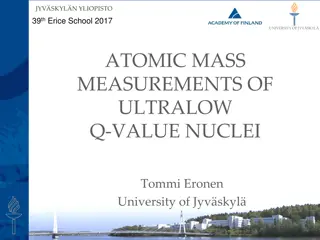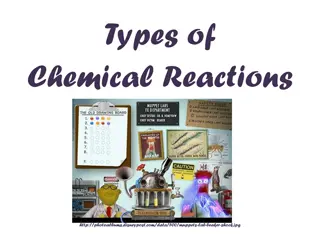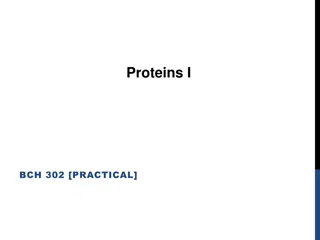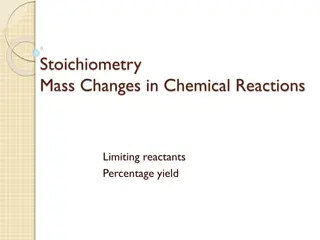Understanding the Law of Mass Action in Chemical Reactions
Chemistry students often assume reactions go to completion, but the Law of Mass Action shows that equilibrium is reached with specific amounts of reactants and products. This law, demonstrated through experiments, helps determine equilibrium concentrations using the Keq expression. By applying basic algebra and the principles of chemical equilibrium, the impact of reactant amounts on reaction progress can be analyzed and Keq values calculated.
Download Presentation

Please find below an Image/Link to download the presentation.
The content on the website is provided AS IS for your information and personal use only. It may not be sold, licensed, or shared on other websites without obtaining consent from the author. Download presentation by click this link. If you encounter any issues during the download, it is possible that the publisher has removed the file from their server.
E N D
Presentation Transcript
Law of Mass Action in Action
Initially, chemistry students often assume that any reaction goes to completion using up all the reactants before reaction stops. This is sometimes the case, but seldom exactly so. (Treatment modeled after: Modern Chemical Science by Jack E. Fernandez) For example, the formation of carbon dioxide and hydrogen gas by the reaction of carbon monoxide and water at 600oC will stop at a point at which only 2/3 of the expected amount of product is formed: carbon monoxide CO (g) + H2O (g) = CO2 (g) + H2 (g) (1) water carbon dioxide hydrogen
carbon monoxide water CO (g) + H2O (g) = CO2 (g) + H2 (g) (1) So if you start with 1 mole CO (g) and 1 mole H2O (g) at 600oC how many moles of all gases will be present at equilibrium? (Fill in amounts in table below.) carbon dioxide hydrogen Gas CO H2O CO2 H2 Initial (moles) 1 Final (moles) 1/3 1/3 2/3 2/3 1 0 0
Experiments have also shown if, instead, the initial gases are 1 mole of carbon dioxide and 1 mole of hydrogen at 600oC, the same amounts of all four substances result at equilibrium. Evidence that equilibrium exists is that the same final situation results whether the experiment is run forward or backward. As you learned in lecture thousands of experiments performed over the centuries have shown that the following mathematical relationship holds no matter what amounts of reactants are used. This is the Law of Mass Action: Reactants Products bB + cC = dD + eE [D]d [E]e K eq = ------------ = CONSTANT [B]b [C]c [ ] = concentrations (initially moles/liter for our purposes)
carbon monoxide CO (g) + H2O (g) = CO2 (g) + H2 (g) (1) water carbon dioxide hydrogen You will investigate the impact of amounts of reactants on reaction progress You are going to calculate the equilibrium amounts of all gases present using basic algebra and the Law of Mass Action. First write the Keq expression for reaction (1): [CO2] [H2] [CO] [H2O] [PRODUCTS] (2) Keq = = [REACTANTS]
Assuming your container volume is 1 liter and you start with 1 mole each of CO and H2O, is it possible to calculate the numerical value of Keq ? Remember from above that experimental results for 600oC proved that the reaction will stop when only 2/3 of the expected amount of product is formed: Gas CO H2O CO2 H2 Initial (moles) 1 1 0 0 Final (moles) 1/3 1/3 2/3 2/3
So, substitute the equilibrium amounts of all four gases into the Keq expression below and calculate the numerical value of Keq at 600oC. Keq =[PRODUCTS] [REACTANTS] [ ] 2/3 1/3 =[ ] [ ] [ ] 1/3 2/3 = 4
Initial and final moles of all gases are summarized in the table below. Initial (moles) Final (moles) Gas at equilibrium 0.33 0.33 0.67 0.67 CO H2O CO2 H2 1 1 0 0
What if you start with different amounts of CO and H2O, for example, 2 moles/liter of CO & 1 mole/liter of H2O? To complete these calculations you will use a method you probably remember from introductory chemistry as ICE (Initial, Change, Equilibrium). Always keep the original chemical reaction in mind, because every Keq expression is tied to a specific chemical reaction. carbon monoxide CO (g) + H2O (g) = CO2 (g) + H2 (g) (1) water carbon dioxide hydrogen
Let x = the number of moles of CO2 and H2 formed. Then you will generate algebraic expressions for the moles of CO and H2O present at equilibrium using the variable, x . CO (g) + H2O (g) = CO2 (g) + H2 (g) If the experiment starts with 2 moles/liter of CO and 1 mole/liter of H2O, and x moles of CO2 and H2 are present at equilibrium, develop algebraic terms for moles of CO and H2O present at equilibrium? Gas CO H2O CO2 H2 Initial (moles) 2 1 0 0 Final (moles) 2 - x 1 - x x x
Now substitute terms for your unknowns into the Keq expression. [ ] x Keq =[CO2] [H2] [CO] [H2O] Remember you use steps such as these to generate a polynomial expression that can be solved for x . 4 ([2-x] [1-x]) = [x] [x] [ ] x = = 4 [ ] 2-x [ ] 1-x 4(2 - 2x x + x2) = x2 4(2 - 3x + x2) = x2 8 - 12x + 4x2 = x2 3x2 - 12x + 8 = 0
You can then use the quadratic equationto calculate a value for x, __________ - b b2 - 4ac x = --------------------------------- 2a that applies to equations of the following form: ax2 + bx + c = 0. 3x2 - 12x + 8 = 0 Use of the quadratic equation yields two values for x so which of the two values do you choose? 0.84 X- X+ 3.15 Remember that we let x = the number of moles of CO2 and H2 formed. If the experiment started with 2 moles/liter of CO and 1 mole/liter of H2O it is not possible to form 3.15 moles of either of the products. Therefore, the correct value of x must be 0.84 moles/liter.
So, complete this summary table of the initial and final moles of all gases. Initial (moles) Final (moles) Gas at equilibrium 1.16 0.16 0.84 0.84 2 1 0 0 CO H2O CO2 H2
If the experiment starts with 10 moles/liter of CO and 1 mole/liter of H2O, and x moles of CO2 and H2 are present at equilibrium, what are the initial and final moles of all gases? Gas CO H2O CO2 H2 Initial (moles) 10 1 0 0 Final (moles) 10 - x 1 - x x x Substitute terms for the equilibrium concentrations into the Keqand develop the polynomial used to solve for x . [X] [X] [10-X] [1-X]= 4 Keq =[CO2] [H2] [CO] [H2O] 3x2 - 44x + 40 = 0 =
3x2 - 44x + 40 = 0 You then use the quadratic equationto calculate a value for x once you have derived the correct polynomial. The quadratic equation again yields two values for x so which of the two values do you choose? x- x+ If the experiment started with 10 moles/liter of CO and 1 mole/liter of H2O it is not possible to form 13.7 moles of either of the products. Therefore, the correct value of x must be 0.97 moles/liter. 0.97 13.7
So, a summary of the initial and final moles of all gases looks like this: Initial (moles) Final (moles) Gas at equilibrium 9.03 0.03 0.97 0.97 10 1 0 0 CO H2O CO2 H2
Summarize your results from all three experiments Initial moles CO Final moles CO Initial moles H2O Final moles H2O % H2O consumed 0.33 0.33 0.16 67 84 97 1 2 10 1 1 1 1.16 9.03 0.03 What relationship do you see between starting moles of CO and % H2O consumed? The % H2O is a good way to measure progress of the reaction because we have kept the starting number of moles of H2O = 1 for each experiment so we can trace how much of this reactant is consumed as the number of moles of CO is increased.
Obviously, as the number of moles of reactants increases (caused by increase in the moles of CO present) the reaction progresses farther and more reactants (represented by the amount of H20) are consumed.














